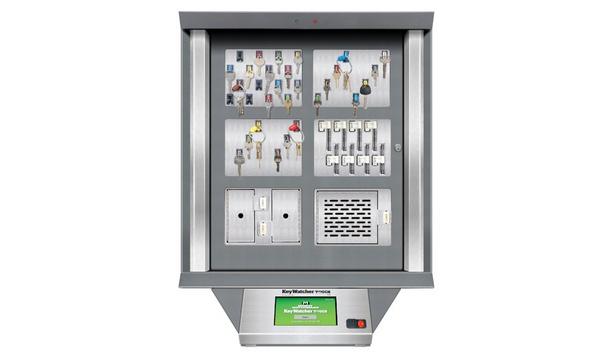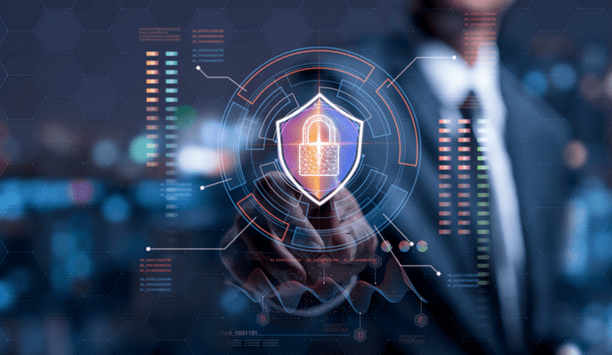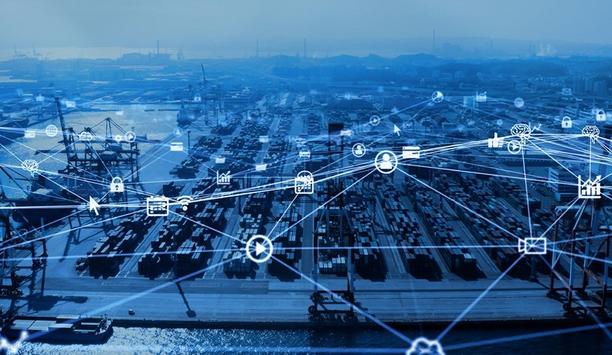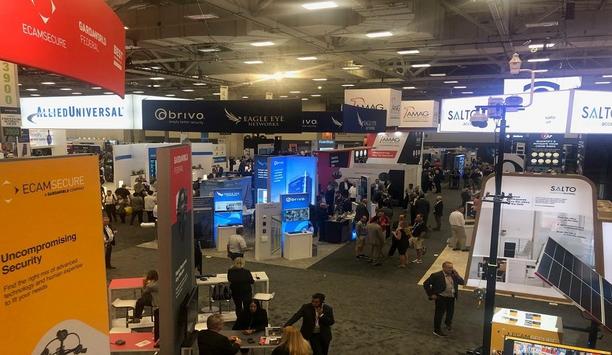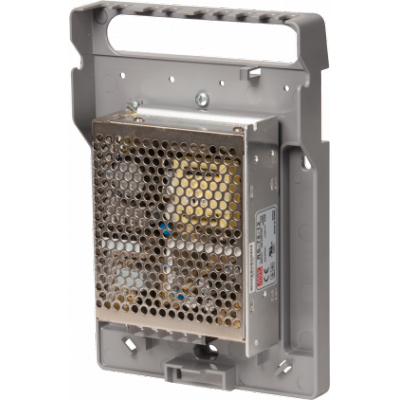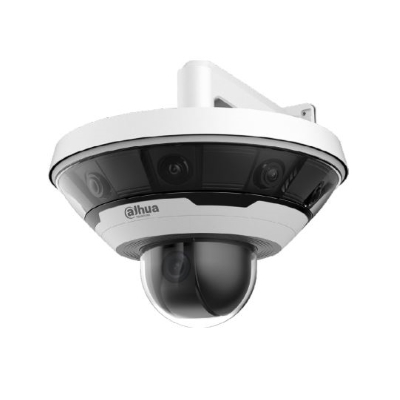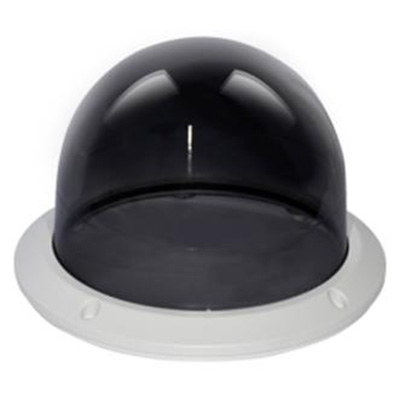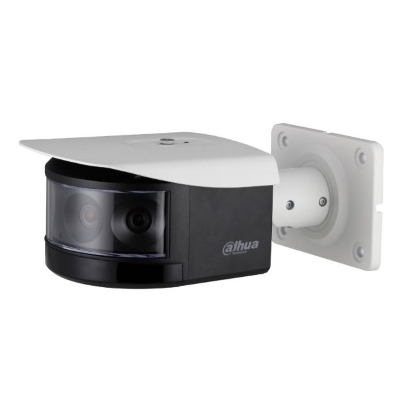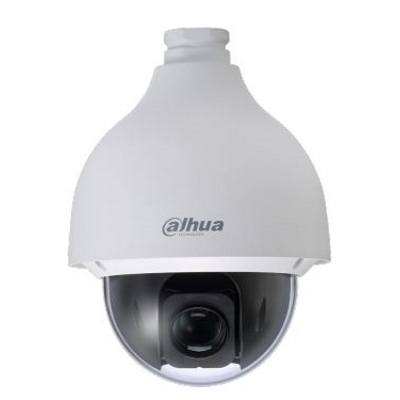Security service
Smiths Detection, a pioneer in threat detection and security screening technologies, and a business of Smiths Group plc, announces it is to supply SDX 6040 X-ray inspection systems to a number of major cruise lines. With thousands of people and large quantities of cargo coming onboard, screening systems are vital in helping detect weapons, explosives, drugs, and other prohibited items hidden in luggage or supplies. SDX 6040’s portable and flexible design SDX 6040’s portable and fl...
Morse Watchmans, the industry pioneer in key control and asset management systems, is highlighting its advanced solutions at stand 5/E20 during The Security Event UK 2025. The company will demonstrate innovative key management systems tailored for applications in healthcare, education, transportation, critical infrastructure, and many other sectors. Key management system KeyWatcher® Touch, designed for secure, efficient, and easy-to-use key control Taking centre stage is their flagship K...
Pioneering cybersecurity business, Trustonic, has announced the appointment of Claire Maslen as its new Senior Vice President of Commercial and Operations for Secure Platform. Established in 2012, Trustonic delivers advanced technology systems to drive innovation, protect revenue, and enhance security for device manufacturers worldwide. Key industry initiatives With extensive experience in multinational corporations and scale-up businesses operating in mobile With extensive experience in mul...
Reconeyez, a pioneering provider of AI-powered perimeter security solutions, is pleased to announce the launch of the Reconeyez SIM, a seamless and hands-off SIM service designed to enhance connectivity and simplify deployment for Reconeyez systems. Alongside this launch, the company has appointed Guy Combrinck as Head of Sales for the UK and Ireland, marking a significant step in its expansion strategy. Introducing Reconeyez SIM The new Reconeyez SIM is a robust and flexible connectivity sol...
The Security Industry Association (SIA) has announced its new Board of Directors chair-elect and presented its new and returning members to the SIA Board of Directors on April 1 at The Advance, SIA’s annual membership meeting, and the following Board of Directors meeting during ISC West. The SIA Board of Directors ratified the selection of Mike Mathes, executive vice president (EVP), western operations at Convergint and former treasurer of the SIA Board of Directors, as SIA...
Building Intelligence, a provider of solutions that securely streamline vendor, vehicle, and visitor access, announced strategic additions to its leadership team. These experienced industry and technology pioneers are committed to deepening customer relationships, uncovering new growth opportunities, and delivering innovative solutions that meet the changing demands of security and operations. Building Intelligence’s portfolio As Head of Product Strategy, Jeff Staples will guide th...
News
Allied Universal®, the world’s pioneering security and facility services company, announced its Unified Command Centre solution was recognised as an honourable mention in the 2025 Security Industry Association (SIA) New Products + Solutions (NPS) Awards - less than 30% of nominations received this recognition. The solution was honoured in the Managed Services category at the awards ceremony held at the ISC West conference this week in Las Vegas. Advancing security solutions “It’s an honour to be recognised by the 2025 SIA New Products + Solutions Award program for our pioneering-edge mobile unified command centre,” said Steve Jones, global chairman and CEO of Allied Universal. “This recognition reflects our team’s dedication to advancing security solutions that deliver exceptional results, and we remain committed to continuous innovation to help enhance safety worldwide.” Real-time video analytics Allied Universal’s Unified Command Centre is a security hub integrating real-time video analytics Allied Universal’s Unified Command Centre is a rapidly deployable security hub integrating real-time video analytics, seamless communication, and intelligent incident management. Supported by a dedicated team, it optimises logistics, enhances decision-making, and enables swift threat detection and response. Designed for dynamic environments, it delivers comprehensive situational awareness and adaptable security. SIA NPS Awards “The SIA NPS Awards are a renowned global platform for highlighting new offerings each year, and earning recognition is an impressive accomplishment,” said Elisa Mula, vice chair of the SIA NPS Awards Committee and founder and protection management specialist at EM Designs. “SIA applauds this year’s winners, who impressed our judges after an extensive process of tech demonstrations and panel-driven judging.” Innovative physical security products According to the SIA website, “the SIA New Products + Solutions Awards reflect the evolution of the security industry and the convergence between physical and cyber security products…a panel of judges with extensive industry experience reviewed new products and solutions from top exhibiting brands in 33 different categories, including the prestigious Best New Product and Judges’ Choice Awards.” Established in 1979, the SIA New Product + Solutions Awards recognise innovative physical security products, services, and solutions that are used to help protect of life and property in residential, commercial and institutional settings.
Pioneering Yorkshire security firm Gough & Kelly has extended its 25-year partnership with the University of Sheffield with a six-figure electronic security contract. The five-year contract will see the installation and ongoing maintenance of over 1,300 advanced CCTV cameras integrated with Avada Connect AI technology in 150 university buildings across the city. The team at Gough & Kelly says this will create a ‘smarter, safer, and more secure’ campus for 100,000 daily users, including students, staff, and visitors. Avada Connect software The Avada Connect software allows for advanced identification of people of interest Gough & Kelly’s AI-powered surveillance system will significantly improve security monitoring across Sheffield University sites and help to deter crime, monitor suspicious activities, and provide visual evidence in the event of incidents such as theft, vandalism, loitering, unusual activity, and unauthorised access. The Avada Connect software allows for advanced identification of people of interest. It has a spotlight search function that saves time and resources while providing accurate results. Gough & Kelly security services The system also provides real-time threat detection, automated alerts, and advanced object searching, allowing the control team to search specific objects, including faces, clothing, bags, and licence plates. Gough & Kelly has been a trusted partner of Sheffield University for more than 25 years, providing CCTV, access control, and manned security services across the university campus. In recent months, the company has also provided stewarding services at the university-owned Octagon Performance venue following the temporary closure of Sheffield O2 Academy. Integrating Avada Connect Gough & Kelly has been a trusted partner of Sheffield University for more than 25 years Andy Stokes, Sales Director at Gough & Kelly says: “We are thrilled to be expanding our work with the university with the installation of new, digital CCTV systems." “By integrating Avada Connect, we are upgrading the university to the same cutting-edge cloud-based CCTV monitoring, currently in use across Doncaster, Sheffield, and (where else). With its advanced timeline searching and identification capabilities, Avada Connect is compatible with most CCTV systems and makes security more efficient while resulting in significant cost-saving benefits.” Installation of new digital CCTV cameras Elsewhere in the city, Gough & Kelly partnered with Sheffield City Council and Sheffield Police last year for the Safer Streets initiative, in which saw the installation of 15 new digital CCTV cameras on London Road and Ecclesall Road. Gough & Kelly was established in 1988. Headquartered in Leeds, the company now employs more than 270 people and provides security and safety solutions for councils, sporting events, venues, schools, colleges, and universities across the UK.
Bugcrowd, a pioneer in crowdsourced cybersecurity, announced the availability of its new Managed Service Provider (MSP) offering. This service is designed to help MSPs efficiently address the backlog of compliance-related pentests. By providing a standardised and scalable solution, with streamlined scoping, Bugcrowd's MSP offering empowers small to midsize businesses to meet their compliance requirements without delay. Bugcrowd's mission for MSPs The service leverages the unique and extensive pen testing expertise of The Crowd The service leverages the unique and extensive pen testing expertise of The Crowd (also known as ethical hackers) to deliver a reliable and efficient way for MSPs to enhance their capabilities and offer new, best-in-class services to their clients. This launch marks a significant step forward in Bugcrowd's mission to broaden support for MSPs and their customers. Bugcrowd's security threats "Bugcrowd's new MSP offering is a game-changer for our partners and an important step for our program," said Jacques Lopez, VP, Global Channel & Alliances, Bugcrowd. "By leveraging our crowdsourced streamlined-scope pentesting capabilities, MSPs can offer their clients fast, reliable, and cost-effective compliance testing. This enables those clients to stay ahead of regulatory requirements and security threats, while their systems are secure and compliant. This offering can augment the capabilities of those partners who already provide pentesting, enabling them to reserve their in-house pentesters for projects they are best suited for while Bugcrowd handles more routine projects.” Bugcrowd’s best-in-class pentesting capabilities The new offering helps MSPs support skill gaps within their practices, provides co-branding with Bugcrowd’s best-in-class pentesting capabilities, and offers attractive revenue opportunities for interested partners. Key capabilities include: Comprehensive Services: MSP Pentesting capabilities include networking, API’s, web, mobile apps, and cloud configuration testing. Standardised Delivery: Managed by Bugcrowd, the program methodology consistently provides a reliable and standardised approach to pentesting. Short Stand-up Time: Partners can launch engagements in as little as three business days, ensuring rapid response times for urgent compliance needs. RapidRevenue: Partners can benefit from faster revenue recognition through faster initiation of engagements, making it financially advantageous for MSPs. Powered by Bugcrowd: Partners not only enhance their service portfolio but also instil confidence in their clients by leveraging Bugcrowd's industry-pioneering expertise in cybersecurity. Expand into other Bugcrowd offerings: Crowdsourced offerings like Bug Bounty, Vulnerability Disclosure Programs, Attack Surface Management, and more are available for traditional resale. Bugcrowd’s service "SMBs often struggle to employ the services they need to meet compliance requirements. Bugcrowd’s service not only enhances our ability to deliver high-quality compliance testing to our clients but also helps us scale our operations and meet the growing demand for pentesting services," said Mitch Evans, Director, Cybersecurity Consulting at BARR Advisory. "We are thrilled to work with Bugcrowd on deploying this service and look forward to new and existing clients benefiting from these trusted capabilities." The new MSP offering is available immediately to a limited number of partners. Pricing is based on a flat rate model, with various options depending on the scope of the pentesting required.
Sielox LLC President and CEO Karen Evans announced its annual Certified Sielox Integrators Award recipients for 2024. For the 30th time overall, MCM Integrated Systems of Van Nuys, California, was awarded National Certified Sielox Integrator of the Year. Sielox access control software “MCM Integrated has a remarkable 26 consecutive years of commitment to Sielox access control software and controllers,” said Evans. “Rich McMillan and his team define what experts are when it comes to configuring, installing and servicing secure, access control systems consistently over time.” Sielox Layered Security solutions Sielox also awarded nine Certified Integrators in the silver and gold categories Sielox also awarded nine Certified Integrators in the silver and gold categories. “Sielox access control systems generate data that can provide businesses with invaluable insights for smarter decision-making when being alerted of access anomalies,” continued Evans. “These notifications help security teams detect unauthorised activity and strengthen audits.” "Sielox is proud to commit to our integrator channel who provide a variety of critical services for the End User,” continued Evans. “Our recognition of the award winners is an important part of reinforcing their contribution in providing Sielox Layered Security solutions.” Gold Certified Sielox Integrator awards Sielox Awarded the Gold Certified Sielox Integrator awards to: Empower Security Contractors – San Jose, CA DynaFire - Casselberry, Florida “The two Gold Certified Integrator winners from either end of the country have a unique ability to manage key accounts,” said Ms. Evans. “Their problem-solving skills and service capabilities are at the highest level.” Silver Certified Sielox Integrators awards Sielox Awarded the Silver Certified Sielox Integrators awards to: Avtec Systems Integrator – Logan, Utah Egan Company – Brooklyn Park, Minnesota Empire Computing & Consulting – Daytona Beach, Florida Integrated Systems & Services – Eatontown, New Jersey JCT Solutions – Springfield, New Jersey SeaCoast Security Associates – Northford, CT Shanix, Inc. – Cranston, Rhode Island
Allied Universal®, the world’s pioneering security and facility services provider, has ranked fifth out 700 companies on Newsweek’s America's Most Trustworthy Companies list. The news outlet’s 2025 list features companies ranking highest in employee, customer and investor trust. “It’s an honor to be recognized as one of America’s most trustworthy companies. We are deeply committed to earning and maintaining the trust of our employees, customers and the communities we help protect,” said Allied Universal Global Chairman and CEO Steve Jones. Allied Universal's vision and leadership Jones added: “At Allied Universal, we foster a culture of integrity, respect and growth, ensuring our team members feel valued, our customers receive exceptional service, and our investors have confidence in our vision and leadership.” According to Newsweek, rankings were determined via an independent survey of 25,000 U.S. respondents, resulting in more than 100,000 evaluations reflecting perspectives of consumers, employees and investors.
Trackforce, a pioneer in security workforce management software, and Immix, a provider of commercial central station and remote SOC software for managed video and security services, announced a strategic partnership to enhance remote guarding operations through advanced automation and seamless security event management. The collaboration integrates Trackforce’s comprehensive front-line to back-office suite, TrackTik, with the Immix platform to create an industry-first automation framework, optimising security operations centres (SOCs) and remote guarding service providers on a single platform. Security challenges “As security challenges evolve, organisations need smarter, more coordinated approaches to protecting people and property,” said Byron McDuffee, CEO of Trackforce. “Security teams are stretched thinner than ever, and the old ways of monitoring and dispatching don’t cut it anymore. By joining forces with Immix, we’re making it easier for security operations centres and remote guarding providers to react instantly, deploy resources efficiently, and keep people and property safer—without the bottlenecks of outdated, fragmented processes.” Immix’s incident identification and triage capabilities By integrating Immix’s incident identification and triage capabilities with TrackTik’s dispatch and reporting functionality, the partnership enables security organisations to: Automate Incident Response: Identify and process security events with minimal manual intervention. Enhance Compliance & Reporting: Ensure compliance with regulatory and insurance requirements through structured reporting workflows. Improve Operational Efficiency: Reduce response times and optimise security resource allocation across multiple sites. Unify Security Operations: Provide a centralised command and control platform for SOCs, allowing teams to monitor and manage security events across disparate systems. Automation and integrated systems The security industry is undergoing a rapid transformation, with technology-driven solutions The security industry is undergoing a rapid transformation, with technology-driven solutions reshaping the way companies approach threat detection, analysis and response. As organisations face labour shortages, rising security risks, and growing regulatory demands, automation and integrated systems have become essential to scaling security operations efficiently. Game-changer for remote guarding “Immix is constantly seeking ways to improve those ‘last mile’ elements that often create challenges within our industry,” said Chris Brown, CEO of Immix. “This partnership creates a seamless automation solution that receives, processes, dispatches, and reports events all in one place. It’s a game-changer for remote guarding providers, ultimately enabling them to offer better, more proactive service to their clients.”


Expert commentary
The days of being reactive are over. That’s right, we as an industry, can no longer afford to be reactive. As threats evolve, the need for proactive security is critical. While traditional methods, including physical barriers and security personnel, are still necessary, the future of our approach is built on the backs of emerging technologies. Substantial vulnerabilities As an industry, we’ve operated reactively for decades, it has been common for security teams to address threats only after they occur. The growing risk landscape proves that this approach has significant limitations. Human oversight, delayed responses, and the inability to monitor large areas have exposed substantial vulnerabilities. Emergence of AI AI enables real-time monitoring, advanced data analysis, and more accurate risk detection Times are changing though and it’s largely due to the emergence of AI. AI is revolutionising the security landscape by making technology smarter. It enables real-time monitoring, advanced data analysis, and more accurate risk detection. This ensures a higher level of security and safety, minimising potential incidents' impact while enhancing overall safety. Focus on strategic aspects AI's ability to process vast amounts of data quickly and accurately is, quite frankly, a game-changer. It can identify patterns and anomalies that can provide stakeholders with critical insights to respond in a more prepared manner. By automating routine tasks and highlighting potential issues, AI also allows operators to focus on more complex and strategic aspects of security management, rather than responding to false alarms. The future is AI The future of security lies in AI. The Security Industry Association (SIA) has recognised AI as one of the top security megatrends in 2024. However, the challenge is not adopting AI, it is about effectively using it to enhance security. AI can enhance video surveillance by improving object detection and enabling real-time, informed responses AI systems can easily integrate with existing infrastructures, providing a layered defence that combines traditional methods with more modern technology. For example, AI can enhance video surveillance by improving object detection, reducing false alarms, and enabling real-time, informed responses. This ensures that security measures are adaptive, scalable, and capable of addressing the evolving risk landscape. Don’t react, anticipate One of AI's most significant benefits is its ability to provide proactive insights. AI can predict potential breaches by analysing behaviour patterns and detecting anomalies allowing security pioneers to do something before an event happens. This shift, from reactive to anticipatory measures, marks a significant advancement in asset protection and risk management. AI systems can also continuously analyse data and distinguish between everyday events and real-world threats. It’s AI's continuous learning capabilities that mean the systems can adapt and improve over time to become more accurate and efficient in threat detection and response. Save money, scale on demand Contrary to common belief, adopting AI technologies will not put a security department over budget. It may be surprising, but these solutions offer cost-effective and scalable alternatives to traditional security measures. An initial investment in AI technology can result in substantial long-term savings (and ROI) by reducing the need for physical infrastructure and on-site security personnel. Customisable solutions The ability to scale and customise AI solutions makes them an efficient choice for enhancing perimeter defence AI systems are also inherently scalable and can be tailored to meet the specific needs of different environments. This ensures the system can evolve with emerging threats and technological advancements without requiring a complete system overhaul. The ability to scale and customise AI solutions makes them a practical and efficient choice for enhancing perimeter defence. How’s that for staying within budget? Embrace the possibilities Integrating AI into perimeter security is the future of proactive and intelligent security. As these technologies continue to evolve, we can expect even more refined solutions that are predictive, autonomous, and capable of directly addressing new and emerging threats. We’re experiencing an exhilarating transformation as AI becomes more trusted, precise, and advanced on multiple levels. This evolution is bigger than pilots and small, low-profile deployments. AI in perimeter security For instance, France is preparing to deploy AI-powered video surveillance as it gears up to host the 2024 Olympics, part of its efforts to detect sudden crowd movements, abandoned objects, and suspicious activities. Think about the sheer scale of that project. We’re finally moving forward, and staying one step ahead must be our priority. But this shift requires a significant change in mindset. Are you ready to make the change?
In the realm of physical security, the distinction between being perceived as a security vendor and a security partner holds great importance. While both may seem interchangeable at first glance, how an organisation is viewed by its clients can have a huge impact on the success of its security programmes. At the heart of this differentiation is the concept of relationships and how they shape the dynamics between providers and their clients. Time, care, and diligence For security vendors such as systems integrators, security dealers, monitored services providers or manufacturers that sell directly to the end user elevating from supplier to partner requires a greater investment of time, care, and diligence. However, the eventual payoff can be incalculably advantageous to the organisation. Not only does this approach better serve the client but it also cultivates longer-term business and is more likely to generate referrals. Clients will change vendors often but stick with partners for the long haul. Simple installation and/or service Security end-users should look to their security products and service providers to partner with them Security end-users should look to their security products and service providers to partner with them, be vested in their success, and be part of the solution. They should seek out and expect more than a simple installation and/or service in the absence of any real, tangible, and value-added relationship with stakeholders. That means looking deeper than the similar cameras or equipment most vendors provide. Doing so brings benefits from the partnership in solving problems and creating strategies for mitigation. Vendors have short shelf lives A security vendor is typically seen as a transactional company that offers products or services to address specific security needs or challenges. When an organisation engages with a vendor, the focus is primarily on the exchange of goods and/or services for a fee. The relationship tends to be more transactional, with limited interaction beyond the scope of the security solution being provided. Tools, technologies, or service offerings The relationship between a security vendor and a client is often short with a one-time purchase Security vendors often play a crucial role in the security industry by offering specialised tools, technologies, or services that can help organisations improve their defences against threats. Examples would be video surveillance, access control, intrusion detection, or fire/life-safety systems, as well as the monitoring of any of them from a central monitoring station or security operations command centre. The thing about it is, however, that the relationship between a security vendor and a client is often short with a one-time purchase and limited ongoing engagement or consultation. Partners prove their value On the other hand, a security partner is viewed as a member of the team that works closely with an organisation to address its security challenges. Unlike a vendor, a security partner is invested in the long-term success of their clients and is committed to building a strong relationship based on expertise, trust, and transparency. Creating custom solutions Security partners go beyond offering products or services by engaging with companies and organisations Security partners go beyond offering products or services by engaging with companies and organisations to understand their unique security needs, goals, and challenges. They work concurrently with organisations to develop customised security solutions, provide support and guidance, and adapt to ever-changing threats and risks. When this kind of scenario is developed, the potentially distracting and detracting focus on monetary cost moves to the back burner because the value and return on investment (ROI) are so thoroughly compelling. Relationships bring real benefits The core of the difference between being perceived as a security vendor and a security partner hinges on the crucial role of relationships. While vendors focus on transactions and sales, partners prioritise collaboration and a sense of being in it together. Building strong relationships based on trust, communication, and shared goals is essential for forging a successful security partnership. Personalised approach Security partners navigate complex security challenges, drive innovation, and deliver incredible value over the long term Security partners are not just providers of security solutions; they are trusted advisors who are invested in the success and well-being of their clients. They can be reached easily when needed and emphasise a personalised approach with custom-tailored solutions. By building strong relationships based on respect and understanding, security partners navigate complex security challenges, drive innovation, and deliver incredible value over the long term. Operational opportunities Businesses and facilities often encounter or face very specific security needs that can only truly be solved in concert with a vendor that essentially acts like an extension of the end-user organisation. Furthermore, when communicating and collaborating on that level, additional security/safety and sometimes even operational opportunities for improvement come to light. This amplifies the value for both the end customer and their security vendor. Talk about a win-win! Prosper with partner power While vendors offer products or services, partners offer teamwork, expertise, and a shared commitment At the end of the day, the difference between being a security vendor and a security partner is not merely a matter of semantics. It is about the fundamental difference in approach and mindset toward physical (electronic and networked) security. While vendors offer products or services, partners offer teamwork, expertise, and a shared commitment to reducing losses and crime. Quality of relationships Ultimately, it is the quality of relationships that separates providers in the security space and determines the success of security initiatives in the current rapidly changing security landscape. This unification of intent, practice, and purpose enables practitioners and the public alike to harness the full power of pioneering-edge technologies that support the security industry’s core mission of protecting people and property. Security partners are not just providers of security solutions; they are trusted advisors who are invested in the success and well-being of their clients.
As we head into a new year, it’s fair to say that it isn’t easy out there for the security integrator community. That’s understandable given the big ruptures felt in the market for physical security in 2023. Typically, Commercial Real Estate (CRE) landlords are the biggest and most influential buyers of physical security hardware and software, but this is starting to wane as heightened borrowing costs and biting inflation cause real estate valuations to plunge. Building security upgrades A lot of CRE landlords are in a fight for survival which unfortunately doesn't leave much room for budget spend on building security upgrades. This state of affairs is a problem for security integrators with extensive connections in the CRE space. Where do they pivot their services to keep their business growing in 2024? From the conversations I’ve been having with integrators and customers alike over the past few months – the answer is that the growth potential lies in the enterprise space. The trajectory of enterprise IT and physical security Aren’t enterprises carrying out cost-cutting efficiency drives and downsizing office space to reflect hybrid working It might initially feel unnatural to see the enterprise segment as a potential driver of demand for physical security services and products. Aren’t enterprises carrying out cost-cutting efficiency drives and downsizing office space to reflect hybrid working habits? These things are true but also present an opportunity for the right physical security proposition. Standardisation of enterprise IT Take efficiency drives as an example. A key element of such efforts is an acceleration towards the standardisation of enterprise IT platforms, hardware, and solutions, using the cloud. What was once a focus on moving on-prem systems and workloads to the cloud has shifted to efforts to keep cloud OpEx costs down by centralising as much as possible. Practically, this means utilising APIs to plug disparate IT applications and services into central platforms that boast a “single pane of glass” view. APIs APIs drive consumption, open new business models, and foster cross-industry partnerships APIs aren’t anything new to enterprises. They drive consumption, open new business models, and foster cross-industry partnerships. However, the use of APIs in the physical security sphere has been surprisingly slow to take off. There are multiple elements to this but a key reason is that some security software products on the market aren’t cloud-based. Adding cloud-based solutions to network Others are cloud-based, however, and these are the solutions that security integrators need in their portfolio to serve the influential enterprise market segment and its approach to IT networks. Selling the value of these solutions requires integrators to take it a step further by speaking the language of the enterprise IT buyer and understanding their goals. The power of cloud-based access control in the enterprise Hybrid working and the occupancy rate fluctuations it brings require closer monitoring of access events The continued relevance of physical security for enterprises can’t be understated. After all, hybrid working and the occupancy rate fluctuations it brings require closer monitoring of access events – not less. Despite the discourse around office downsizing, the reality for most enterprises is that the office can’t be done away with completely and there’s always going to be growth experienced by successful companies that require an upgrade in physical square footage. Physical security Access control systems that are cloud-based will be preferred by the enterprise to fulfill the essential function of physical security. That’s because they align with the push towards centralisation in the cloud that enterprises are carrying out business-wide. Access control has the potential to result in lots of disparate dashboards and apps. Think video management, license plate recognition, building management software, elevator monitoring, hot desking solutions, guest booking software, room booking functions, and more. Uniting all of these functions in one platform suits enterprise security teams well. Access control solutions Linking employee databases to an IAM solution, or creating seamless experiences by tying access credentials But this only scratches the surface. Access control solutions that can be integrated with hugely popular corporate software applications like Okta, Azure Active Directory, and Google Workspace quickly catch the eyes of enterprise IT security teams by pulling in the same direction as the broader tech stack. Whether it’s applying AI analytics to anomaly detection, linking employee databases to an Identity Access Management (IAM) solution, or creating seamless experiences by tying access credentials to things like meeting room bookings, it’s through APIs that cloud-based access control can thrive in an enterprise setting. Security integrators It’s worth also noting that as enterprises grow, access control gets harder. Managing the access requirements of thousands of employees across a global real estate footprint requires the scale that cloud computing is best placed to bring. Security integrators who can join the dots to make that link are well positioned to pivot toward the enterprise. Broadening horizons Concepts like smart access and applying AI to access data to automate the monitoring of occupancy rates This pivot is understandably a daunting prospect but the potential for natural synergy shouldn’t be overlooked. Concepts like smart access and applying AI to access data to automate the monitoring of occupancy rates and security anomalies won’t be completely alien to cloud-first enterprises. That’s an opportunity for integrators to upsell more sophisticated security set-ups in a way that they may have found more difficult with CRE clients and prospects. Tailored propositions It would be remiss to avoid mentioning that ‘enterprise’ is a very loose term that encompasses businesses across multiple industry verticals. To better pivot, security integrators need to offer tailored propositions specific to set verticals that cover all bases as opposed to offer, for example, piecemeal alarm or video product solutions. Enterprise industry verticals Security integrators should be weary of all-encompassing narratives in 2024. Whether or not the global economic picture darkens, there are always going to be pockets of growth within certain enterprise industry verticals. Plus, anecdotally, the indicators point to enterprises being the driver of demand for cloud-based access control as we head into the new year. Integrators who can dial into that shift have a lot to gain and nothing to lose.
Security beat
The shift from standalone systems to fully integrated solutions is one of the biggest shifts the security industry has experienced in recent years. There is a higher demand for integrated solutions that go beyond just security at the device and software level, and manufacturers have been continuously developing improved application programming interfaces (APIs), and hybrid and cloud-connected solutions. Artificial intelligence (AI) Also, artificial intelligence (AI) plays an important role in modern intrusion systems by helping enable automated threat detection, real-time response, and predictive analysis. AI algorithms can analyse vast amounts of data to identify patterns and anomalies that may indicate security breaches. Security solutions are being developed with a focus on AI and machine learning to provide more proactive and resilient defences against increasingly sophisticated cyber threats. Benefits of AI AI-driven security solutions can continuously learn and adapt to new threats, providing more robust protection “The practical benefits of AI in security systems include enhanced accuracy in detecting threats, reduced response times through automation, and the capability to anticipate and prevent potential vulnerabilities before they are exploited,” says Sergio Castillejos, President, of Commercial Security at Honeywell. Additionally, AI-driven security solutions can continuously learn and adapt to new threats, providing businesses with more robust and dynamic protection. Unified Intelligent Command user interface Honeywell meets the challenge of better-integrated systems with a unified Intelligent Command user interface (UI). Castillejos says Honeywell continually innovates with the latest analytics and encryption to keep up with evolving threats. Honeywell’s products integrate with many offerings for partners to construct a robust and modern system relevant to their security needs. Advanced cloud-based security Advanced cloud-based security technologies have been developed that offer real-time monitoring, automated threat detection Advanced cloud-based security technologies have been developed that offer real-time monitoring, automated threat detection, and remote management, essential for hybrid work environments, says Castillejos. “These solutions enhance scalability, improve data analytics capabilities, and provide seamless updates reducing significant maintenance costs that help companies to respond swiftly to emerging threats and enable robust, adaptive security measures.” Physical and digital security The best security systems are a combination of physical, digital, and national security, says Castillejos. While Honeywell focuses on providing the best in physical and digital security within their solutions, protecting sensitive and/or personal information must also be within the responsibility of the organisational policy. Cybersecurity for connected devices Some of the challenges in the next five years will likely include integrating advanced technologies Security systems can safeguard this information by being highly configurable while also notifying users of unwanted activity. Sometimes, just restricting access to sensitive areas can be enough. However, in the world of data analysis and machine learning, security systems can audit and report on users who have accessed data to ensure that the protections are in place. Some of the challenges in the next five years will likely include integrating advanced technologies such as AI and the Internet of Things (IoT) while securing cybersecurity for connected devices, notes Castillejos. Balancing act “Additionally, there will be a growing need for skilled professionals to manage and maintain these complex, connected systems,” he says. “Balancing cost-effectiveness with the demand for resilient security solutions will also pose a significant challenge, especially for smaller businesses.” Legacy systems that are susceptible to vulnerabilities like cloning or unauthorised access present the largest challenge to overcome. “However, as technology evolves, it becomes more challenging for a customer to manage a unified security system rather than a collection of unique solutions that all operate independently,” says Castillejos. Disruptive technology But investing in the newest analytics, AI and IoT will not improve a company’s physical security systems if they do nothing with the data. “They are not a replacement for the devices that keep people and property safe,” says Castillejos. “They can enhance a user’s experience and speed up the time to respond when they are planned correctly.” The best security systems will look at disruptive technology as another tool in the overall system. However, the focus should remain on the user experience. If the latest technology is not properly integrated or configured, it will turn into more noise that most operators will ignore. {##Poll1720586145 - Which is the most useful benefit of artificial intelligence (AI) in security systems?##}
Fueled by mounting concerns about the cybersecurity vulnerability of U.S. ports, President Joe Biden has signed an Executive Order aimed at shoring up defences against cyberattacks. Cybersecurity initiative The cybersecurity initiative marks a significant shift in policy, empowering key agencies and outlining concrete actions to bolster defences. By empowering agencies, establishing clear standards, and fostering collaboration, the initiative aims to strengthen U.S. ports against the evolving threat of cyberattacks, safeguarding the nation's maritime economy and national security. Expanded authority for DHS The proactive approach aims to prevent incidents before they occur The Executive Order grants expanded authority to the Department of Homeland Security (DHS) and the Coast Guard to address maritime cyber threats. DHS gains the power to directly tackle these challenges, while the Coast Guard receives specific tools. The Coast Guard can compel vessels and waterfront facilities to address cyber vulnerabilities that endanger safety. The proactive approach aims to prevent incidents before they occur. Real-time information sharing Reporting any cyber threats or incidents targeting ports and harbors becomes mandatory. This real-time information sharing allows for swifter response and mitigation efforts. The Coast Guard also gains the authority to restrict the movement of vessels suspected of posing cyber threats. Inspections can be conducted on vessels and facilities deemed risky. Mandatory cybersecurity standards The standardisation aims to eliminate weak links in the chain and prevent attackers from exploiting Beyond these broad powers, the Executive Order establishes foundational elements for improved cybersecurity. Mandatory cybersecurity standards will be implemented for U.S. ports' networks and systems, ensuring a baseline level of protection across the board. This standardisation aims to eliminate weak links in the chain and prevent attackers from exploiting individual vulnerabilities. Importance of collaboration and transparency Furthermore, the initiative emphasises the importance of collaboration and information sharing. Mandatory reporting of cyber incidents fosters transparency and allows government agencies and private sector partners to work together in mitigating threats. Additionally, the Executive Order encourages increased information sharing among all stakeholders, facilitating a unified response to potential attacks. Maritime Security Directive The Executive Order encourages investment in research and development for innovative cybersecurity solutions To address specific concerns, the Coast Guard will issue a Maritime Security Directive targeting operators of Chinese-manufactured ship-to-shore cranes. This directive outlines risk management strategies to address identified vulnerabilities in these critical pieces of port infrastructure. The long-term success of this initiative hinges on effective implementation. The Executive Order encourages investment in research and development for innovative cybersecurity solutions, recognising the need for continuous improvement and adaptation to evolving threats. Recognising the urgency of cyber threats The initiative has been met with widespread support from port authorities, industry stakeholders, and cybersecurity experts who recognise the urgency of addressing cyber threats. However, some concerns exist regarding the potential burden of complying with new regulations for smaller port operators. Effective communication, resource allocation, and collaboration among all stakeholders will be crucial to ensure the successful implementation of this comprehensive plan. Enhancing cybersecurity The more impactful and noteworthy piece is the associated NPRM from the U.S. Coast Guard (USCG) “This Executive Order is a positive move that will give the U.S. Coast Guard (USCG) additional authority to enhance cybersecurity within the marine transportation system and respond to cyber incidents,” comments Josh Kolleda, practice director, transport at NCC Group, a cybersecurity consulting firm. The more impactful and noteworthy piece is the associated Notice of Proposed Rulemaking (NPRM) from the U.S. Coast Guard (USCG) on “Cybersecurity in the Marine Transportation System,” adds Kolleda. Portions of the notice of proposed rulemaking (NPRM) look similar to the Transportation Security Administration (TSA) Security Directive for the rail industry and the Emergency Amendment for the aviation industry. Coordinating with TSA on lessons learned The USCG should be coordinating with TSA on lessons learned and incorporating them into additional guidance to stakeholders and processes to review plans and overall compliance, says Kolleda. “At first glance, the NPRM provides a great roadmap to increase cybersecurity posture across the various stakeholders, but it underestimates the cost to private companies in meeting the requirements, particularly in areas such as penetration testing,” says Kolleda. Cyber espionage and threats The focus is on PRC because nearly 80% of cranes operated at U.S. ports are manufactured there “It is unclear if or how the federal government will provide support for compliance efforts. As this seems to be an unfunded mandate, many private companies will opt for the bare minimum in compliance.” “Cyber espionage and threats have been reported by the Director of National Intelligence from multiple nation-states including China, Russia, and Iran,” adds Paul Kingsbury, principal security consultant & North America Maritime Lead at NCC Group. The focus here is on the People’s Republic of China (PRC) because nearly 80% of cranes operated at U.S. ports are manufactured there, he says. Destructive malware “The state-sponsored cyber actors’ goal is to disrupt critical functions by deploying destructive malware resulting in disruption to the U.S. supply chain,” says Kingsbury. “These threat actors do not only originate in China or other nation-states but also include advanced persistent threats (APTs) operated by criminal syndicates seeking financial gain from such disruptions." "The threat actors don’t care where the crane was manufactured but rather seek targets with limited protections and defences. The minimum cyber security requirements outlined within the NPRM should be adopted by all crane operators and all cranes, regardless of where they are manufactured.” PRC-manufactured cranes Kingsbury adds, “The pioneering risk outlined in the briefing is that these cranes (PRC manufactured) are controlled, serviced, and programmed from remote locations in China." "While this is a valid concern and should be assessed, there are certainly instances where PRC-manufactured cranes do not have control systems manufactured in PRC. For example, there are situations in maritime transportation system facilities where older cranes have been retrofitted with control systems of European Union or Japanese origin.” Monitoring wireless threats “The Biden Administration’s recent Executive Order is a critical step forward in protecting U.S. ports from cyberattacks and securing America’s supply chains,” says Dr. Brett Walkenhorst, CTO at Bastille, a wireless threat intelligence technology company. “To ensure proper defence against malicious actors accessing port-side networks, attention must also be paid to common wireless vulnerabilities." "Attacks leveraging Wi-Fi, Bluetooth, and IoT protocols may be used to access authorised infrastructure including IT and OT systems. Monitoring such wireless threats is an important element in a comprehensive approach to upgrading the defences of our nation’s critical infrastructure.”
Companies at GSX 2023 emphasised new ways that technologies such as artificial intelligence (AI) and the cloud can address long-standing issues in the security market. Among the exhibitors at the event in Dallas were companies seeking creative ways to apply technology, lower costs, and make the world a safer place. Reflecting on the exhibition, here are some additional takeaways. Expanding AI at the edge i-PRO is a company reflecting the continued expansion of edge AI capability in the security market. Today, more than half of the company’s lineup supports AI at the edge so the customer has a wide choice of form factors when seeking to leverage the feature set. AI processing relay, extended warranty i-PRO is increasing their warranty period from 5 to 7 years, which could be a lifetime warranty in some cases I-PRO also has an “AI processing relay” device that accepts non-AI video streams and applies edge analytics. AI has progressed from a high-end technology to a feature available in a variety of cameras at different price points. i-PRO is also increasing its warranty period from 5 to 7 years, which could be a lifetime warranty in some cases depending on a customer’s refresh schedule and lifecycle management. Active Guard, MonitorCast The company’s video management system (Video Insight) is continuing to build new features including “Active Guard,” an integrated metadata sorter. Their access control platform, MonitorCast, is a Mercury-based solution that is tightly integrated with Video Insight. Their embedded recorders now have PoE built in. “We can move at a faster pace to fill out our product line since leaving Panasonic,” says Adam Lowenstein, Director of Product Management. “We can focus our business on adapting to the market.” Emphasis on retail and other verticals Shoplifting is a timely issue, and retail is a vertical market that got a lot of attention at GSX 2023. “We see a lot of retailers who are primarily interested in protecting employee safety, but also assets,” says Brandon Davito, Verkada’s SVP of Product and Operations. “Shrinkage is a CEO-level priority.” “Retailers are getting more engaged with security posture, instead of letting perpetrators walk,” Davito adds. Intrusion detection Verkada has an intrusion product that will notify a central station if there is an alarm On the alarm side, Verkada has an intrusion product that will notify a central station if there is an alarm, and operators can review videos to confirm the alarm. Other capabilities seeking to discourage trespassers include sirens, strobes, and “talkdown” capabilities. International expansion Verkada continues to expand internationally with 16 offices in all, including Sydney, Tokyo, and London. The core value proposition is to enable customers to manage their onsite infrastructure more simply, including new elements such as PTZ cameras, intercoms, and visitor management. Verkada emphasises ease of use, including a mobile application to allow access to be managed across the user base. Forging partnerships “We are committed to the channel and industry, and we continue to build relationships and expand our reach,” says Davito. Among the industry relationships is a new partnership with Convergint, which was hinted at during the show and announced later the same day. They are also expanding their partnerships with Schlage, Allegion, and ASSA ABLOY. Working with other verticals They offer new features for K -12 schools, and a new alarm platform is easier to deploy and manage Verkada has also found success across multiple other verticals, notably healthcare, where they integrate with an electronic medical records system. They offer new features for K-12 schools, and a new alarm platform is easier to deploy and manage. They are integrating wireless locks to secure interior doors in schools, looking to secure the perimeter, and installing guest management systems. Transitioning the mid-market to the cloud Salient is squarely focused on the “mid-market,” a large swath of systems somewhere between small businesses and enterprise-level systems. Pure cloud systems are not as attractive to this market, which has a built-out infrastructure of on-premise systems. Adding a camera to an existing system is easier and less expensive than tying it to the cloud. Benefits of cloud It’s a market that may not be ready for the pure cloud, but there are benefits to be realised from adding a cloud element to existing systems. “We are continuing to augment our premise-based solutions with added cloud capabilities and flexibility,” says Sanjay Challa, Salient’s Chief Product Officer. The feedback Salient hears from their customers is “I want to own my data.” The hybrid cloud approach offers the right mix of control, flexibility, and unit economics. Cloud add-on capabilities We want to provide the flexibility for customers to go full-cloud as it becomes more economically attractive" Cloud add-on capabilities include bringing more intelligence about system operation to the user via the cloud. Over time, Salient expects to sell more cloud-centric offerings based on feedback from integrators and customers. “We want to provide the flexibility for customers to go full-cloud as it becomes more economically attractive over time,” says Challa. Vaidio AI technology Salient seeks to be a transition pioneer to help customers realise the path to the cloud. Their approach is “crawl, walk, run,” and helping customers make the transition at each stage. Salient has added AI to its product offering, incorporating Vaidio AI technology from IronYun into a powerful suite and broad array of on-premise analytics, which are gaining traction. The seamless approach makes it easy for customers to embrace AI analytics, although Salient remains broadly committed to open systems. Addressing ‘soft’ features for integrators AMAG is in the process of enhancing its product line with the next generation of access control panels. However, “product” is just part of the new developments at AMAG. In addition to “hard” features (such as products), the company is looking to improve its “soft” features, too; that is, how they work with the integrator channel. Integrator channel Rebuilding a process to make your organisation more efficient, is relatively easy; it just takes a lot of persistence" “We have the depth of our legacy customer base we can learn from, we just need to close the feedback loop quicker,” says Kyle Gordon, AMAG’s Executive Vice President of Global Sales, Marketing, and commercial Excellence, who acknowledges the value of reinstating face-to-face meetings after COVID. “We are laser-focused on nurturing our integrator channel,” he says. “Developing new features takes time, but rebuilding a process to make your organisation more efficient, that’s relatively easy; it just takes a lot of persistence,” says Gordon. More cohesive internal communication is another useful tool, he says. Disrupting the cloud based on price Wasabi is working to make cloud applications less expensive by offering a “disruptive” price on cloud storage, $6.99 per terabyte per month (80% less than hyperscalers). Contending “hyperscalers” like AWS are charging too much for cloud storage, Wasabi is using its own intellectual property and server equipment co-located in data centres around the world. Wasabi sells “hot cloud storage,” which refers to the fact that they only have one tier of storage and data is always accessible. In contrast, a company such as AWS might charge an “egress fee” for access to data stored in a “colder” tier. Cloud storage “We saw that several video surveillance companies had not yet adopted cloud storage, and we saw an opportunity to make it easy to use,” said Drew Schlussel, Wasabi’s Senior Director of Product Marketing. “We just install a little bit of software that allows them to store data in the cloud and bring it back from the cloud.” Performance, protection (cybersecurity), and price Wasabi works with integrators, resellers, and distributors and also integrates with VMS companies Wasabi works with integrators, resellers, and distributors and also integrates with VMS companies such as Genetec and Milestone. Emphasising performance, protection (cybersecurity), and price, their data centres are certified to SOC 2 and ISO 27001 standards. Faster throughput for weapons detection Xtract One is a young company focusing on weapons detection in a time of accelerated concern about gun issues post-COVID. Founded in Canada and based on technology developed at McMaster University, Xtract One has found a niche in providing weapons detection at stadiums and arenas. These customers already have budgets, and it is easy to shift the money to a newer, faster technology. Madison Square Garden in New York City is among its customers. Cost savings solution Xtract One can increase throughput to 30 to 50 people per entrance per minute (compared to 5 to 6 people per minute when using metal detectors). The solution doesn’t require anyone to empty their pockets and the system alarms on items beyond guns and knives. Using Xtract One allows customers to reduce the number of screening lanes and security staff, providing additional cost savings, all while getting fans through the screening process in half the time. Purpose-built sensors The system uses purpose-built sensors looking for specific characteristics, such as reflective and density properties In addition to stadiums and arenas, Xtract One, formerly Patriot One, is also getting “inbound” interest from schools, hospitals, manufacturers, and other verticals that makeup 50% of their business. “We’re on a rocket ride, mainly because the weapons issues are not going away,” says Peter Evans, CEO and Director at Xtract One. The system uses purpose-built sensors looking for specific characteristics, such as reflective and density properties, all correlated by an AI engine. Providing early warning of violence ZeroEyes is another company focused on weapons detection. Their AI gun detection system works with video images to identify if someone is “brandishing” (carrying) a weapon. In other words, the system does not detect concealed weapons. Identifying someone carrying a weapon provides early warning of a possible violent act. Increased response with AI-enables images Images are identified by AI and sent to a monitoring centre where a human confirms the image before contacting first responders. Knowing the location of a shooter enables staff to lock entry points, move people to safety, and direct first responders. The company was founded to leverage existing camera views to stop mass shootings and gun violence by reducing response times.
Case studies
Interface Systems, a managed service provider of security, actionable insights, and purpose-built networks for multi-location businesses, announced that Nicker Management, a fast-food franchise operator in the Los Angeles area, has successfully implemented Interface’s Virtual Security Guard solution. By deploying Interface’s advanced security technology, Nicker Management has enhanced safety, reduced operational costs, and provided a secure environment for employees and customers. Nicker Management Nicker Management, led by sisters Nicole Harper Rawlins (CEO) and Kerri Harper-Howie (Co-owner), operates 24 fast-food restaurants across South LA, Compton, Lynwood, and Carson. Faced with persistent security challenges, including loitering, panhandling, and criminal activity, the company sought a modern, cost-effective solution to protect its employees and guests. Addressing critical security concerns Nicker Management chose Interface Systems to implement the Virtual Guard solution at one of its restaurants “We’re faced with lots of challenges with crime, unhoused people, and individuals suffering from mental and/or substance abuse issues,” said Harper Rawlins. “It creates significant risk at our restaurants. Over the years, we experimented with a range of security solutions, and hiring on-site guards quickly became costly and unsustainable.” After evaluating various options, Nicker Management chose Interface Systems to implement the Virtual Guard solution at one of its restaurants, ensuring a proactive and scalable approach to security. How can Virtual Guard Solution help? 24/7 Monitoring & Rapid Response – Trained intervention specialists continuously monitor restaurant locations to deter loitering, panhandling, and aggressive behavior in real time. Automated Voice-Downs – Proactive announcements throughout the day signal active monitoring and reinforce security presence. Virtual Tours – Scheduled and unscheduled remote video assessments help identify threats, suspicious activities, and compliance issues. Employee Security Escorts – Live monitoring ensures employees' safe passage to and from their vehicles during vulnerable times such as shift changes, and opening, and closing hours. Secure working environment “Knowing there’s a professionally trained security team on standby gives us confidence that we can maintain a secure working environment at all hours,” said Harper Rawlins. The deployment of Virtual Guard has streamlined security operations at Nicker Management’s restaurant, allowing staff to focus on providing excellent customer service without the burden of handling security incidents. 24/7 monitoring With 24/7 monitoring by Virtual Guard, employees and customers feel safer, and staff no longer have to handle security threats alone. In addition, automated alerts also remind employees of key procedures during shift changes. The system's effectiveness was demonstrated during a recent incident when a loiterer refused to leave the restaurant lobby. The staff triggered a silent alarm, and the Virtual Guard team immediately responded with a voice-down, prompting the individual to leave without further incident. Optimises costs “Interface’s Virtual Guard solution empowers franchise businesses like Nicker Management to address security risks effectively while optimising operational costs,” said Sean Foley, Chief Revenue Officer at Interface Systems. “Our innovative approach allows employees to focus on delivering excellent service, knowing their safety is in trusted hands.”
There are well over 1,200 road tunnels in Norway. Camera-based incident detection is the preferred way to keep these tunnels safe and support tunnel operators in organising a fast incident response. Camera-based detection Gradually introduced since the nineties, camera-based detection is well established. Both visual and thermal imaging cameras have proven to be a fail-proof solution for 24/7 automatic incident detection inside tunnels. With the latest camera technology upgrade of the Damsgård Tunnel in Bergen, Norway is premiering AI-enhanced dual-vision cameras as a new evolution in incident detection. Damsgård Tunnel technology upgrade In 2024, the tunnel will undergo a comprehensive technology upgrade, with the replacement The Damsgård Tunnel is part of Norwegian National Road 555, which runs from Fjell to the city center of Bergen. The road tunnel opened in 1992 and has two tubes of around 2.3 kilometers in length, each carrying two lanes of traffic through the Damsgårdsfjellet mountain.In 2024, the tunnel will undergo a comprehensive technology upgrade, with the replacement of ventilation systems, lighting, drainage, and camera technology. AI-enhanced dual-vision cameras Unique to this project is that, for the first time in Norway, AI-enhanced dual-vision cameras will be used. The traffic cameras from sensor specialist FLIR combine thermal and visual imaging technology in a ruggedised housing and rely on advanced deep learning algorithms that enable the camera to detect stopped vehicles, wrong-way drivers, queues, crossing pedestrians, and even smoke and fires in their early stages. Approximately 80 FLIR cameras are scheduled for installation in the second half of the year. The history of tunnel incident detection in Norway The Damsgård tunnel upgrade is another milestone in Norway’s long-standing efforts to secure the country’s vast number of tunnels. Due to Norway’s complex landscape, with fjords, mountains, and islands, road tunnels have always been a way to solve the region’s unique transportation challenges. Norway has embraced the use of automatic incident detection in its road tunnels ever since the technology came into being, with FLIR setting the pace of this evolution since the beginning. In 1995, FLIR cameras were already used in the 1,500-meter-long Ekeberg Tunnel near Oslo. FLIR automatic incident detection system In 2004, a European directive on road tunnel safety prompted the roll-out of incident detection systems In August 1996, when a bus stopped and caught fire in that tunnel, the FLIR automatic incident detection system generated an alert to the tunnel operators, enabling them to close the tunnel entries and exits and activate warnings to oncoming motorists. In 2004, a European directive on road tunnel safety prompted the roll-out of incident detection systems in tunnels continent-wide and since then the technology evolution has not stopped. Visual and thermal incident detection Initially, visual CCTV cameras were used to detect incidents. The technology enabled first response teams to be deployed minutes, even seconds after an incident or an irregularity (a fallen object, a pedestrian, a car slowing down) was detected. About ten years ago, FLIR introduced thermal incident detection cameras in tunnels. These cameras are established as critical assets that guarantee operators' accurate detection throughout the tunnel infrastructure. 24/7 traffic detection The use of thermal imaging cameras has especially proven valuable for tunnel entrances and exits. There, shadows or direct sunlight can obstruct the view of visible-light cameras and therefore disturb traffic detection. Because thermal cameras detect heat, not light, they have no issues with these phenomena. As a result, thermal cameras can detect traffic 24/7 and in all weather conditions. Fire detection FLIR thermal cameras can also spot fires at the stage of ignition, making them the fastest One of the biggest advantages of thermal cameras in the field of tunnel safety is that they can effectively see through smoke. This makes them the ideal technology for tunnel safety operators or emergency response teams to find their way through a smoke-filled tunnel or for incident detection systems to spot issues in time. FLIR thermal cameras can also spot fires at the stage of ignition, making them the fastest and most reliable technology for fire detection inside road tunnels. The role of dual-vision cameras Both visual and thermal cameras have their merits. A visual camera may provide operators with more detail to assess the nature of an incident, while thermal cameras have proven to be unbeatable in detecting incidents in complete darkness and challenging weather conditions. Currently, both detection technologies can be combined into one system, hereby offering operators a more comprehensive view of the environment and improved accuracy compared to single-sensor systems. FLIR’s TrafiBot Dual AI camera is an example of such a combined system. ITS-Series Dual AID cameras In 2018, FLIR’s ITS-Series Dual AID cameras were installed at the entrance and exit of the Lyderhorn Tunnel near Bergen. In 2021, technology integrator Trafsys also installed 332 of FLIR’s dual-vision cameras in the Hundvåg and Eiganes tunnels, which are part of the extensive Ryfast project. The cameras’ fire detection functionality proved effective when a car fire occurred in the Hundvåg tunnel in July 2020; the FLIR ITS dual thermal AID camera detected the fire within 7 seconds of visible flames, following an initial alert for a stopped vehicle and pedestrians. Artificial Intelligence in incident detection AI algorithms embedded in the FLIR camera analyse captured images in real-time and full-resolution FLIR’s TrafiBot Dual AI, installed in the above-mentioned Damsgård Tunnel announces a new wave of incident detection cameras. The camera also combines a visual and a thermal camera in one unit, but what makes it stand out is the use of artificial intelligence and deep learning. AI algorithms embedded in the FLIR camera analyse captured images in real-time and full resolution. This latest addition to FLIR’s portfolio of AI cameras is setting a new standard for automatic incident detection in tunnels, generating extremely accurate traffic data, incident detection information, and live track data. Video image analysation Of course, analytics on traffic cameras are not new. Early cameras from decades ago already used some form of AI. So, what’s the difference with this new generation of AI cameras? Much has to do with how detection systems analyse video images. Early generations of smart cameras analysed the variation of gray levels in groups of pixels in successive video frames. Smart predictions When a vehicle enters a detection zone, the pixel value within that zone changes, and detection is activated. AI systems, however, look at the entire camera image and use object detection techniques to analyse the traffic scene. This results in much better presence detection, better classification of traffic users, and the ability to determine position, speed, and direction. These new AI systems can handle more complex traffic situations and they are much better at making smart predictions. Identification and classification of objects Computing speeds have increased, hardware prices dropped, and the exponential growth of data has worked It’s not hard to see where this is coming from. Over the past decades, computing speeds have increased, hardware prices dropped, and the exponential growth of data has worked as fuel for making AI better and more efficient. Instead of rule-based analytics—if x happens, then y—data-based systems are now in the lead. These systems can be trained on large datasets of images and learn how to identify and classify objects in an image. They use this knowledge to make decisions based on new images that they have never seen before. Benefits of AI-based detection systems AI-powered detection systems are much more accurate than their non-AI alternatives. For tunnel operators, this is a big deal. Nothing is a bigger nuisance for control room operators than having to pay attention to continuous unwanted alarms. AI can help filter out unwanted alarms by distinguishing between routine activity, weather phenomena, and actual incidents. High performance As an important aspect of their accuracy, AI-based systems are much more successful in detecting different vehicle classes. Detectors from FLIR will easily distinguish between a car and a van, or between a small and a large truck. It’s even possible to train a system to detect specific objects or incidents. And because cameras are so smart, installers nowadays are more flexible in installing their equipment. Even in less ideal camera positions, the detection performance of AI-based systems is high. Vehicle parameters Based on vehicle parameters such as speed and direction, they can easily see where a car is going FLIR’s AI detectors can also predict vehicle trajectories. Based on vehicle parameters such as speed and direction, they can easily see where a car is going, even if for part of that trajectory the view of that car is occluded by a passing truck. This makes detection much faster and more accurate. Operators can even be warned by so-called pre-alarms for cars that are slowing down and likely to cause a collision. Reduces human monitoring For traffic or security operators, AI offers many benefits. Since incidents can be detected much faster and with more accuracy, operators will be able to make better-informed decisions, especially in high-stress situations, and they will be able to deploy emergency teams more quickly. AI will also reduce the need for constant human monitoring, allowing operators to focus on other tasks.AI will benefit traffic planners too. Data collected from a camera can be analysed over time to identify trends, patterns, or areas with a higher potential for incidents. This can be valuable for proactive traffic planning, infrastructure improvements, or for overall risk management. Data as the cornerstone of AI performance AI-based detection systems will become the norm very swiftly. Since these systems depend on massive data sets, it’s easy to understand that the detection performance will soon be determined by the quality of the data it is trained with. High-performance systems will need a lot of data for training—in case video images of traffic—but not just any data that has been plucked from the internet will do. Challenges with publicly available datasets The problem with that approach is that, more often than not, publicly available datasets are limited Some camera manufacturers rely on publicly available datasets to train their AI systems. The problem with that approach is that, more often than not, these datasets are limited or of low quality. For example, internet data sets hardly have any thermal images, traffic images are mostly collected during sunny weather or friendly daytime conditions, and they are often taken from useless angles. FLIR model and prediction AI-based products from FLIR, on the other hand, are trained on datasets that have been collected in-house, over more than 30 years, with data samples that are relevant for practically any traffic scene you can think of. What’s more, FLIR’s datasets are continuously growing and with it the quality of its models and predictions. For FLIR, data is the true quality mark which stands for high-performance, accurate traffic detection. The future is AI Norway and FLIR share an interesting history of evolving incident detection technology. A lot has changed since the installation of the first FLIR automatic incident detection system in the Ekeberg tunnel in 1995. Currently, incident detection systems combine multiple sensors—visual and thermal—and, most importantly, they use AI, which enables them to improve their detection performance over time with every new video image they process. Artificial intelligence has a promising future in incident detection. Norwegian tunnels, and the average daily traffic of 40,000 vehicles in the Damsgård Tunnel, will only benefit from it.
Allied Universal®, the security and facility services company announced its collaboration with Clery Center to support programmes and initiatives that help create safer higher education campuses across the U.S. “Our continued collaboration with Clery Center enables Allied Universal to expand its position as a security provider for higher education campuses,” said Mahsa Karimi, director of higher education for Allied Universal. Campus safety awareness and training “The Clery Center partnership provides our security professionals with the training and resources they need to better understand compliance requirements." "As we continue to grow our campus partnerships, campus safety awareness and training for our campus partners and safety professionals is essential. We make campus safety a priority.” Improve campus safety Providing security professionals with the training and resources needed to better understand compliance Allied Universal will work with the Clery Center’s board of directors and members to help ensure that college and university officials meet the standards of the Jeanne Clery Act. The Jeanne Cleary Act requires colleges and universities to report campus crime data, support victims of violence, and publicly outline the policies and procedures they have in place to improve campus safety. Providing security professionals with training and resources needed to better understand compliance requirements, supports efforts to enhance overall campus safety. Safe environment for students, faculty, and staff “We are pleased to continue our long-standing collaboration with Allied Universal in 2025,” said Jessica Mertz, executive director of Clery Center. “With over 30 years of experience in campus safety, Clery Center is dedicated to fostering safer environments for students, faculty, and staff. Joining forces with organisations like Allied Universal allows us to build on shared expertise and advance this important mission.”
In 2024, Hualien, Taiwan experienced devastating earthquakes and typhoons, necessitating rebuilding efforts and tourism revitalisation. VIVOTEK (3454-TW), the global pioneer security solution provider, has stepped in to support the local economy by organising the 4th "Safety Map" sustainability event. This year, the event was held in the historically significant Dachen New Village in Hualien, home to over 400 households. Model safe-tourism destination With 2025 marking the 75th anniversary of the migration of Dachen Island residents from Zhejiang, China, to Taiwan, the area is promoting tourism despite challenges like an aging population and increasing environmental risks. VIVOTEK’s team devised diverse solutions to address safety concerns, aiming to combine smart security with local revitalisation efforts. Their goal is to transform Dachen New Village, the largest settlement of Dachen residents in Taiwan, into a model safe-tourism destination that attracts visitors to experience its unique culture. Caring is the core Expanding Social Impact Through a "Safety Map" “VIVOTEK is dedicated to becoming the most trusted security brand in society. We aim to use our expertise to improve safety and forge a unique path of corporate sustainability. In its fourth year, the scale of our ‘Safety Map’ initiative continues to grow,” stated Alex Liao, VIVOTEK’s President. "This time, our work in Dachen New Village benefits over 1,500 residents and ensures that visiting tourists can explore without safety concerns. Additionally, having our team directly observe and address safety issues helps refine our product design to meet users' needs better." Local revitalisation and tourism Boosting the Tourism Economy Through Immersive Experiences The VIVOTEK team also had an immersive theatrical experience created by Lamb Social Innovation Studio The VIVOTEK security team also had an immersive theatrical experience created by Lamb Social Innovation Studio that delved into Dachen’s history. By understanding the area’s unique needs, they developed tailored safety solutions. “VIVOTEK incorporates “concern for others’ cares” as a core value in our sustainability efforts,” said Allen Hsieh, VIVOTEK’s Spokesperson and Director of the Global Marketing Division. Enhancing safety "Over the years, our ‘Safety Map’ events have spanned neighborhoods, mental retardation training institutions, and schools, fostering a friendlier environment and expanding social impact." "After the natural disasters that recently struck Hualien, leaving behind numerous safety hazards and declining tourist numbers, we hope to use our security expertise to collaborate with residents in enhancing safety and revitalising Hualien’s tourism industry for a win-win outcome." Safety awareness “This is the first in-depth collaboration between Dachen New Village and a corporation. The VIVOTEK security team genuinely considered the needs of the community’s residents." "The event was a co-creation process where everyone brainstormed together, raising safety awareness among residents and inspiring optimism for the community's future transformation,” said Chao Hsiao-Yen, Social Innovation Lamb studio founder. Customised security solutions with AI Building a Safer Dachen New Village At the Ruan Bi Zhenjun Temple, the team explored ways to protect temple assets and visitor donations VIVOTEK’s security team, in collaboration with the local revitalisation group Social Innovation Lamb Studio, worked with residents and elders to identify areas where safety could be enhanced. At the iconic tourist hotspot Ruan Bi Zhenjun Temple, the team explored ways to protect temple assets and visitor donations better while enhancing environmental friendliness, allowing elderly or mobility-impaired individuals to enter and exit freely. Preserving nostalgic charm In the local park, they aimed to reduce disturbances caused by stray animals, improving the overall environment for residents. In the narrow alleys that showcase the history of Dachen’s settlers, the goal was to preserve the nostalgic charm of the village while optimising the environment to make landmarks more recognisable for visitors. For family members living away from home, the community explored innovative technological solutions to enable remote monitoring of loved ones, strengthening familial bonds and care. Various security solutions To address these challenges, VIVOTEK proposed a variety of security solutions. They included installing accessible spaces at the temple to accommodate visitors with mobility challenges, implementing smart lighting systems to enhance nighttime safety, and utilising AI cameras for real-time image analysis and stranger identification. Security solutions included installing accessible spaces at the temple to accommodate visitors The team also designed shared activity spaces to promote intergenerational interactions between the youth and seniors, fostering a sense of community. Emphasising the importance of safety education, the team worked to raise awareness among residents. Generative AI tools Additionally, the project incorporated cutting-edge generative AI tools from the Taiwan Design Research Institute, which visualised proposed solutions quickly and effectively. This approach made it easier for residents to understand and implement the ideas, to transform Dachen New Village into a safer, more livable community, fully prepared to welcome tourists.
Modernising a town's transport hub requires a careful balance of effective security, useful functionality, and sleek design. Jacksons Fencing successfully completed a fencing solution for the Newbury Bus Station redevelopment - an innovative, secure, and sustainable fencing solution that enhances both safety and aesthetics at this key transportation spot. Modern redesign Jacksons Fencing was specified to deliver a key that not only met rigid security ideals As part of West Berkshire Council's ambitious project to upgrade public transport infrastructure, Jacksons Fencing was specified to deliver a solution that not only met stringent security standards, but also blended seamlessly with the station's modern redesign. The result; a smart, sturdy, and sustainable boundary that helps keep the station running smoothly, without compromising on visual appeal. Modern gateway for the community Newbury Bus Station is a central part of West Berkshire's revitalisation plan. Located in a historically rich area, it replaced an old coach parking lot and was designed to offer an "impressive sense of arrival" for both visitors and locals. As a key part of the town’s efforts to create a modern, vibrant, and accessible gateway, the station plays a crucial role in improving the local transport network. To complete the transformation, the station needed a fencing solution that would secure the perimeter, safeguard passengers, and maintain an appealing appearance. Expertly engineered Jacksons Fencing installed 90 metres of Sentry® vertical bar fencing, modern vertical bar railing system Jacksons Fencing installed 90 metres of Sentry® vertical bar fencing, a robust and modern vertical bar railing system designed for high-traffic public spaces. Constructed from hot-dip galvanised tubular steel, the Sentry fencing system is lightweight, yet incredibly strong, capable of withstanding the daily wear and tear of a busy bus station. The sleek, industrial design fits perfectly with the station’s contemporary look, blending seamlessly into the surroundings without being intrusive or creating a hostile environment. Structure for enhanced security The system features a welded pale-through-rail construction, which provides a tamper-resistant structure for enhanced security. Concealed fixings ensure a clean, vandal-resistant finish, while the flat-top construction and non-protruding pales give the fence a non-threatening appearance—ideal for a public space. Additionally, the fence is built to last, backed by a 25-year Service Life Guarantee that reduces maintenance needs and guarantees long-term durability. Combining sustainability with security In extra to its sustainability benefits, the fencing provides a high level of security One of the biggest wins for this project was its alignment with West Berkshire Council’s sustainability goals. The Sentry fencing system is not just tough and reliable; it’s also designed with environmental impact in mind. The durable materials and extended lifespan promise long-lasting performance with minimal need for replacement or maintenance, cutting down on lifetime costs and reducing its environmental footprint. In addition to its sustainability benefits, the fencing provides a high level of security. Its strong, tamper-resistant construction safeguards passengers while preventing unauthorised access without compromising the station’s modern look. Cohesive and secure infrastructure Peter Jackson, Managing Director of Jacksons Fencing, commented: "Contributing to the Newbury Bus Station redevelopment demonstrates our commitment to delivering tailored solutions for local authorities like West Berkshire Council that combine functionality, sustainability, and design." "The success of this project builds on our earlier work at Newbury Train Station in 2022, where we installed 160 metres of Bow Top fencing. Together, these two projects enhance the town’s transport hubs, delivering cohesive and secure infrastructure that supports a vibrant and accessible community.”
Comelit-PAC has partnered with Harrold Jones Services Limited to deliver a stylish and secure access control solution at Warmstry Court, resolving security concerns and ensuring residents' safety and independence. Situated near Worcester’s city centre and next to the River Severn, Warmstry Court is an esteemed housing development, offering high-quality living for older residents while providing peace of mind through secure and comfortable surroundings. Unique security challenges The complex includes several general needs properties rented by Sanctuary Housing The complex includes several general needs properties rented by Sanctuary Housing. Its central location has posed unique security challenges, particularly regarding access control for the building’s car park and residential areas. Sanctuary Housing sought the expertise of Harrold Jones Services to address issues with their existing access control system. After a detailed risk assessment of the site’s needs, Harrold Jones Services collaborated with Comelit-PAC to design and install a tailored access control solution. The new system incorporates Comelit-PAC’s New Housing Central Product combined with High-Security Anti-Cloning Credentials, enabling site managers to monitor and control access from any PC or smart device, regardless of their location. Integrated with Comelit-PAC’s 512 series controllers Says Sanctuary Housing Scheme Manager Kim Tolnai: “The upgraded access control system has completely transformed how we manage the site. Residents now feel much more secure, and we have full control over who can enter the building and use the car park. The ability to monitor the system remotely has also been embraced by our management team. It gives us peace of mind, knowing we can monitor the site wherever we are.” The installation included high-frequency vandal-resistant readers on both the car park barrier and main entry points, integrated with Comelit-PAC’s 512 series controllers and the Housing Central Gateway. This combination delivers total security and reliability, ensuring only authorised residents can access the property and its parking facilities. Comelit-PAC solution A key feature of the new system is the assurance of 128-bit encrypted OPS tokens to all residents Says Danny Wallis, Director of Harrold Jones Services: “We worked closely with the team at Warmstry Court from early specification to ensure the access control system met the bespoke security requirements of the site. The Comelit-PAC solution has been instrumental in providing a comprehensive, future-proof system that seamlessly blends with surroundings with no impact on the aesthetics of the site. The result not only meets but exceeds the expectations of the residents and management team.” A key feature of the new system is the assurance of 128-bit encrypted OPS tokens to all residents. These secure tokens ensure that only authorised individuals can gain access, putting an end to the cloning issues that had previously plagued the site. Installation of the Comelit-PAC access control system Lloyd Palmer, Comelit-PAC’s Regional Sales Manager, provided on-site support to assist with the system’s setup and programming. He also ensured the management team at Warmstry Court was fully trained on the system’s features. Lloyd concluded: “The installation of the Comelit-PAC access control system has transformed security management at Warmstry Court. Sanctuary Housing now benefits from a robust system that ensures only authorised individuals have access to the building and its facilities. The advanced anti-cloning technology and the ability to manage the system remotely provide the ultimate in convenience, security and peace of mind for both residents and management.”


Round table discussion
New technology advancements significantly increase efficiency and productivity in any industry, including physical security. Enhanced innovation both creates new products and services and improves existing products, all for the benefit of security manufacturers, integrators, and end users. Companies that embrace new technology stay ahead of the curve and gain a significant competitive advantage. In addition, they can differentiate themselves in the marketplace. We asked this week's Expert Panel Roundtable: What are the most promising new technologies in the physical security industry?
2025 is likely to see further advancements in artificial intelligence, with potential impacts on various aspects of society, including the security industry. The new year will also require security professionals to adapt to changing market conditions and develop contingency plans for unforeseen events. Industry changes will accelerate and challenge everyone in the security market to keep up. Making specific predictions for the new year can be a struggle, but we asked our Expert Panel Roundtable: What will be the big news for security in the year ahead?
Technology automates tasks, streamlines processes, and improves efficiency in various fields, including physical security. But the success of today’s latest technologies depends on our ability to use them responsibly and efficiently. Optimising our industry’s use of technology requires that the industry’s workforce have the needed skills to operate the latest equipment. We asked this week’s Expert Panel Roundtable: How does technology innovation in security systems impact the skillsets needed by security operators and officers?
Products


Videos
Security service: Manufacturers & Suppliers
- Bolide Security service
- Dedicated Micros Security service
- Dahua Technology Security service
- VIVOTEK Security service
- Seagate Security service
- Hanwha Vision Security service
- ITI Security service
- Vigilant Vision Security service
- Vanderbilt Security service
- OT Systems Security service
- Messoa Security service
- HID Security service
- Panasonic Security service
- Nedap AEOS Security service
- Tamron Security service
- LILIN Security service
- AMAG Security service
- Parabit Security service
- Pelco Security service
- Videotec Security service

Using artificial intelligence (AI) to automate physical security systems
Download
A modern guide to data loss prevention
Download
7 proven solutions for law enforcement key control and asset management
Download
The truth behind 9 mobile access myths
Download
Access control system planning phase 2
Download
